This winter has marked the most improvement in my epic quest to stop failing at gardening. One of the 25 goals I want to accomplish before I’m 25 is to grow a successful vegetable garden, so I decided indoor gardening was a good place to start:
How-to: Grow a little indoor garden / Gardening 101
My outdoor gardens yielded almost nothing last summer, which started to light the fire of frustration (sorry, that phrase  sounds so dramatic) in me about gardening. I decided to try out indoor gardening in the fall on a small scale and failed there too. The herb garden and little garden I planted and blogged about ended up failing. The herb garden was okay for awhile, but the plants I used were all transplants from the summer. Some of them are currently dormant for the winter, and others died. Nothing ever sprouted in the “little garden.” Boo.
Anyway, around Christmas I decided to experiment with a few different garden ideas this go around. The first of these ideas was to use a rack of test tubes as a seed starter planter.
Supplies
a test tube rack
potting soil
spoon
chop stick
some rocks
seeds of your choice
lamp
plant bulb with appropriate wattage for the lamp you’re using
Directions
First, you need to get your hands on a test tube rack! I visited Chicago’s American Science & Surplus Store and found exactly what I was looking for. Lucky for you, they sell these on the internet. Don’t forget to buy enough tubes in the appropriate sizes too.
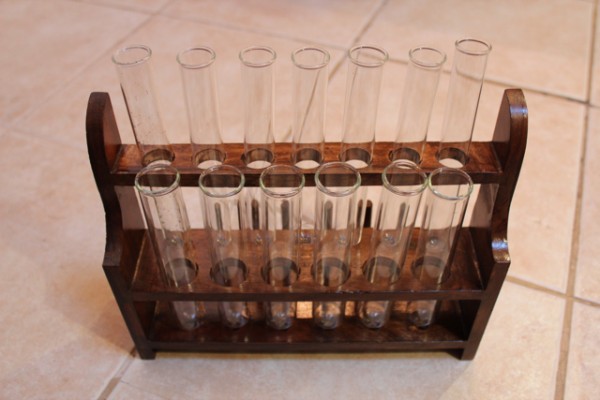
To do this project, I grabbed my handy dandy Martha Stewart-inspired indoor gardening kit (learn how to assemble your own here), since it includes all of the necessary supplies. To get started, carefully put a couple small pebbles in the bottom of each tube, and then spoon potting soil over it.
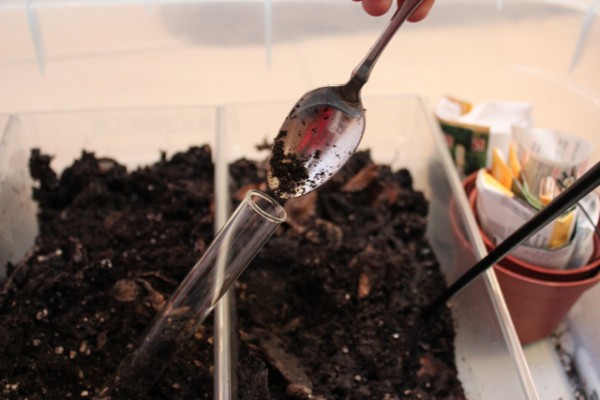
Use a chop stick to help the dirt find its way down the tube, but don’t compact it. It’s hard for seeds to grow in overly tight soil.
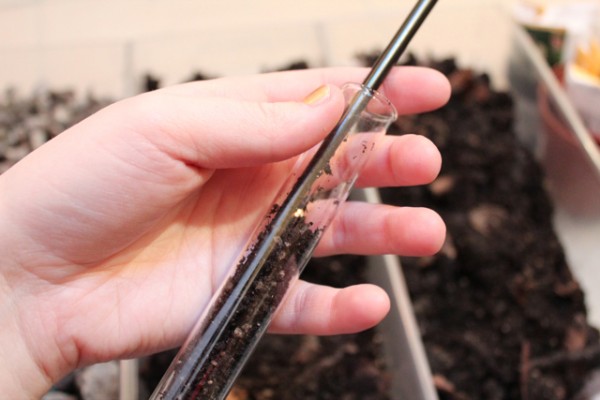
When you’ve got enough soil to plant your seeds, read the planting directions on your seed packets. Add one or two seeds to the soil before topping them with the package-directed amount of soil. If the package calls for firming the soil, use the fat end of the chopstick you used to put soil in the tubes.
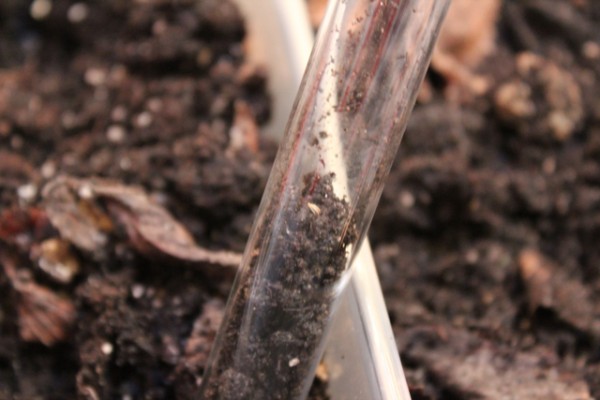
Fillling the tubes takes a little while since the openings of the tubes are so small. The whole fill and plant process looks something like this:
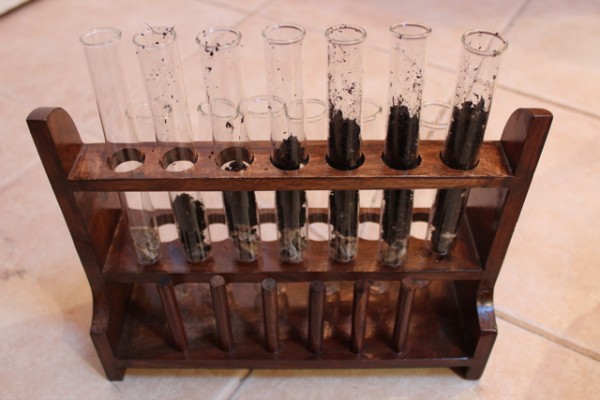
To really give the seeds their best chance, set up your plant light so it points right at the test tubes, and expose your tubes to light for several hours a day. Since the tube openings are so small, an eye dropper or spray bottle are a good idea for watering. Using a cup or watering can is dangerous because easy to over water the plants that way. Then it’s time to wait for the seeds to sprout!
—
In an exciting turn of events, I finally had success with this garden. Maybe it’s because I used healthy soil and plant lights, in addition to paying close attention to seed packet instructions and watering an appropriate amount.
Look how well my baby plants are doing! When it’s time for me to transplant the seedlings, I’ll update you guys on how to transfer plants from the tubes to a bigger garden.
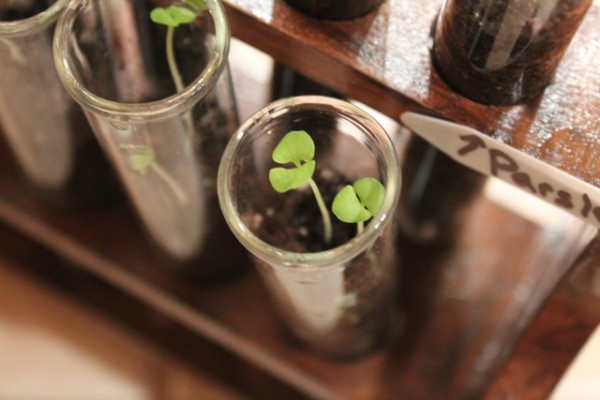
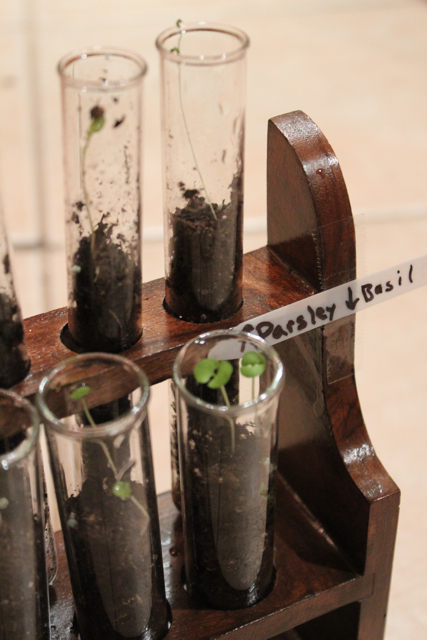
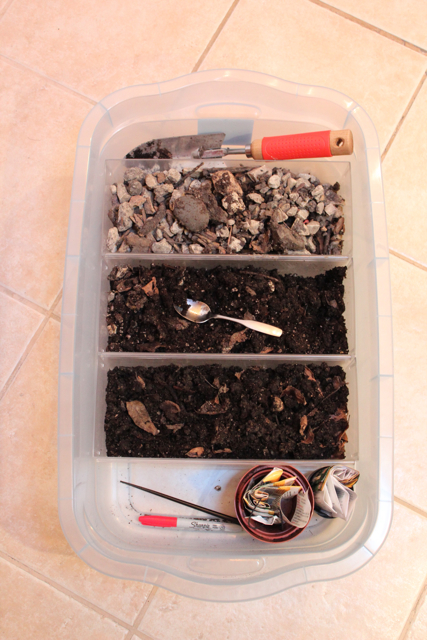

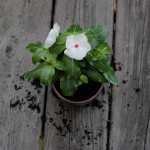
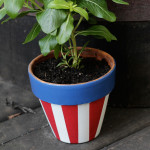



Leave a Reply